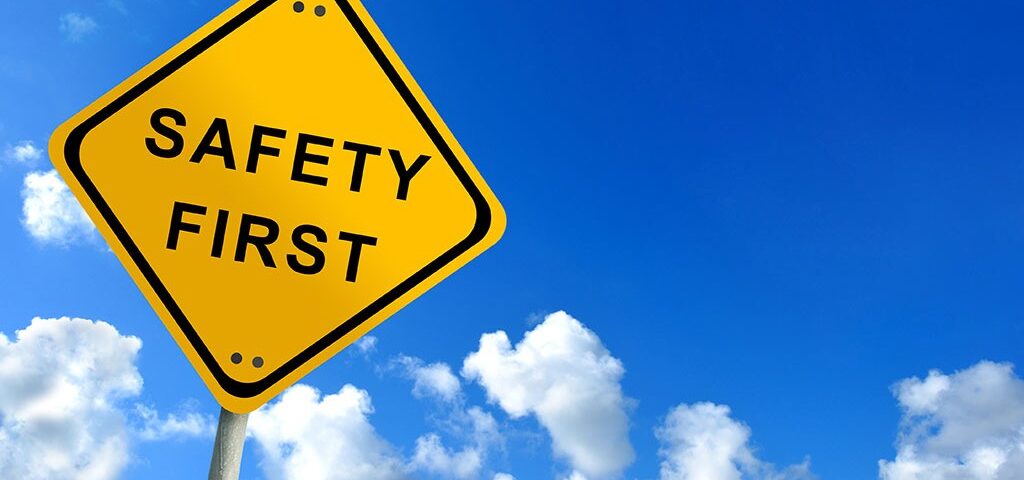By Doug Parisi, Director of Training, SafeDefend
We are all so reliant on others to provide a safe and secure environment for us, that we often neglect taking basic steps to protect ourselves. Those who abdicate their personal responsibility are more likely to have a negative outcome should something bad occur.
Here are 9 steps you can take to improve your ability to thrive in a crisis.
1. Learn to use your phone’s safety features – Phones are the best tool we have for safety. Communicating in a crisis is paramount. What most people don’t know is that phone manufacturers have made it easy to call for help. Go online and type in your phone model with the words ‘safety features’. You’ll find that you don’t need to dial 911 in a crisis. By simply learning your phone’s features, you can instantly contact emergency services. More importantly, your phone can also send your location to dispatch centers and your emergency contacts simultaneously.
2. Make situational awareness a priority – We often develop unsafe routines that we need to change. When you leave work, for example, you should always scan the parking lot before letting the door shut behind you. When you are walking to or from your car, your head should be up and alert- not looking down on your phone. Always look for unusual situations or things that are out of place. Develop a routine where you prepare to leave work by sending all necessary texts and making phone calls before leaving the building or after you are securely sitting in your locked and running vehicle.
3. Know your workplace like your home – We take for granted our familiarity with our daily work environment. Most people are not aware of the building emergency exits where they work. Make sure you know where the stairway exits are. If you have a parking garage, do you know how the stairs exit to the main street? Do you know if stairs allow access to other floors or only the bottom floor? Have you considered where you would secure yourself in a room should a crisis situation occur? Which rooms have doors that lock, multiple exits, or furniture to barricade a door?
4. Keep your strong hand empty – Having a strong hand that is free can help if someone approaches you. Carry your mobile phone in your weak hand or pocket. If you know the safety activation feature, you will be able to signal for help using the weak hand. You want the strong side of your body unencumbered by purses, backpacks, or briefcases. This isn’t natural, but with repetition will become more comfortable. Pushing, striking, opening doors, etc. are things we tend to do with our strong hand. Attempting to adjust to using the weak hand in a crisis will lead to a delayed counteraction or failure.
5. Be smart when approaching your car – Be careful when unlocking your car. Most cars only unlock the driver’s door with the first click. Multiple clicks unlock all the doors. The design is intended to prevent someone from entering your vehicle on the passenger side while you are unaware. Just as important, make sure you are only a few feet away when you click the button. Also, where you park is important. You should always park so that the door you have just exited gives you a view of the passenger side of the car. If you approach from the driver’s side, you never look at what is on the opposite side. By parking appropriately, you can scan for objects around the vehicle.
6. Get a tactical flashlight – Bad things happen in the dark. It’s always encouraged to park near lights and only walk on well-lit streets. A solution: take light with you. Tactical flashlights have a strobe feature that is disorienting to an attacker. In a crisis, the push of a button will illuminate a strobe light that temporarily overwhelms the person it is directed at and causes retina burns which limit visibility. Doing this gives you an opportunity to act without them seeing what you are doing. That small head start can make the difference for your escape.
7. Invest in a trauma pack – Every major retailer and online vendor has affordable trauma kits. We have become so dependent on the quick response by EMTs we have taken away personal responsibility. The Department of Homeland Security has a Stop The Bleed program that empowers civilians to prepare for such emergencies. (https://www.dhs.gov/stopthebleed)
8. Protect your information – We use the same passwords, pins, and phrases out of simplicity but don’t recognize how vulnerable this makes us. Security breaches occur with greater regularity. If you use the same username and password for multiple sites, you are exposing yourself to unnecessary risk. Your financial username should not be the same as your shopping username. Your password can be similar but should always have a different character at the end to prevent overlapping.
Your pin is something that should be guarded. If you are in a supermarket or ATM use your second hand to cover your pin. It is such a basic thing that we feel silly about doing but it can save you a lot of trouble. ATM covert cameras and card readers are being discovered every day. The reader captures the account number, and the camera sees your pin. Simply covering this with your hand can thwart these simple attacks.
9. Be prepared to protect yourself –Whether it is an unwelcome person at your home door, a confrontation in a parking lot, an altercation in a store, or an aggressive driver on the highway, you should always create options for yourself. If you have considered certain ‘possibilities,’ you can formulate a plan of action in your mind. A predetermined course of action saves time in a crisis. If you have already thought about what you would do then you can just act.






